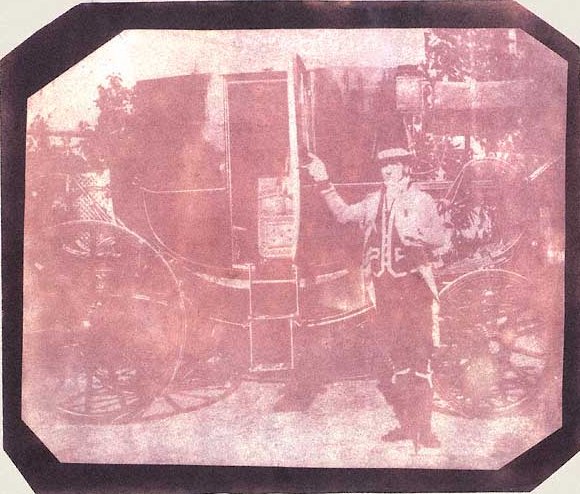
The earliest photograph of a human figure on paper is “The Footman” by William Henry Fox Talbot, from 1840. Footmen came in several varieties; an early breed that quickly went extinct was the running footman, who would advance as a herald before his master’s carriage and also deliver urgent dispatches. In What the Butler Saw, E.S. Turner gives some amazing examples:
- As the table was being laid for dinner in his castle at Thirlstane, the Duke of Lauderdale was informed that there was a shortage of plate, so he sent a running footman over the Lammermuir Hills to his other castle at Lethington, near Haddington, 15 miles away. The man returned with the additional plate in time for dinner.
- In his Recollections of 1826, the writer John O’Keeffe remembers a running footman he saw in his youth in Ireland: “He looked so agile, and seemed all air like a Mercury; he never minded roads but took the short cut and, by the help of his pole, absolutely seemed to fly over hedge, ditch and small river. His use was to carry a message, letter or dispatch; or on a journey to run before and prepare the inn, or baiting-place, for his family or master who came the regular road in coach-and-two, or coach-and-four or coach-and-six; his qualifications were fidelity, strength and agility.”
- One evening the Earl of Home sent a running footman from his Berwickshire castle to Edinburgh on important business. On going downstairs the following morning he found the man asleep in the hall. He was about to chastise him when the man told him he’d already been there and back, a distance of 35 miles each way. (If we allow 12 hours for this that’s 6 mph, allowing for a few breaks to eat and rest. That seems accurate — Turner says that a footman running before his master’s coach “was prepared to cover sixty miles and more in a day, at an average of six to seven miles an hour.”)
“In London the fourth Duke of Queensberry (‘Old Q’) continued to employ running footmen until his death in 1810. He would try out applicants in Piccadilly, lending them his livery for the occasion, and then stand watch in hand on his balcony to time their performance. There is a story that he said to one candidate: ‘You will do very well for me.’ The reply was, ‘And your livery will do very well for me,’ with which the runner bolted.”
